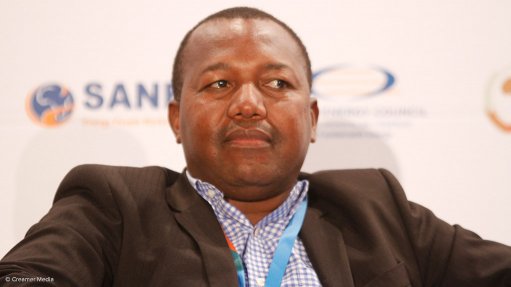
PHUMZILE TSHELANE
Vendor countries provided an array of solutions and government will use the information to put a procurement strategy in place
Photo by: Duane Daws
South Africa is in a preprocurement process regarding nuclear energy and is close to submitting environmental impact assessments (EIAs) for areas selected for the deployment of nuclear power,
according to the Nuclear Energy Corporation of South Africa CEO Phumzile Tshelane, who formed part of a nuclear panel discussion at the seventh yearly Africa Energy Indaba, held in Johannesburg, last month.
Since 2006, government has conducted EIAs on three available nuclear sites that have been shortlisted for the deployment of nuclear power in South Africa – Duynefontein and Bantamsklip, in the Western Cape, and Thyspunt, in the Eastern Cape.
Government last year embarked on fact- finding missions to countries that have used and are using nuclear energy.
Intergovernmental agreements were then signed with vendor countries, which were invited to bring their respective companies to South Africa to share how they were willing to collaborate with South Africa and assist in its nuclear energy programme.
They provided an array of solutions and government will use the information to put a procurement strategy in place, Tshelane said, adding that South Africa was looking not only to buy a piece of equipment but also to reinvigorate the manufacturing industry, uranium beneficiation and the skills required for the construction, maintenance and operations of a nuclear plant.
“We also want to domesticate capability to deploy nuclear to South Africa, Africa and the world,” he noted.
Also on the panel was North-West University School of Mechanical and Nuclear Engineering senior lecturer Dawid Serfontein, who stated that while he believed the nuclear build would take place, it would take longer and cost more to build a new nuclear plant than it did to build the Koeberg power station.
“Koeberg was paid off long ago, so the capital cost is almost zero. We can expect the cost of new nuclear power stations to be considerably higher than that of Koeberg. New plants are more expensive than old-generation plants because they are more sophisticated,” he said, noting that one must also take into account the safety upgrades that had taken place.
Serfontein added that nuclear should play a part in South Africa’s energy mix and that is was an “excellent baseload of energy”.
Coal power, he noted, was slightly cheaper than nuclear if the external added costs – such as the costs of dealing with environmental concerns and health-related problems caused by the smoke from coal-fired power stations – were excluded. Those costs, he said, made coal more expensive than nuclear.
Serfontein suggested that nuclear energy could be used with combined-cycle gas turbines to supply the morning and evening peak electricity demands of the country.